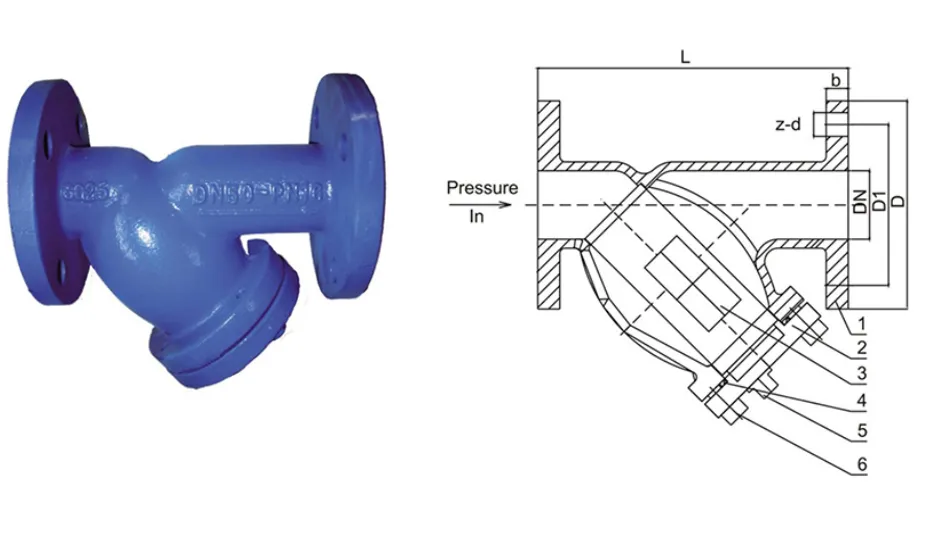Nov . 10, 2024 01:24 Back to list
Flange Dismantling Joint for Efficient Pipeline Maintenance and Repair Solutions
Understanding Flange Dismantling Joints An Overview
Flange dismantling joints are essential components in piping systems, particularly in water supply, sewage, and industrial applications. Their primary purpose is to facilitate the maintenance, repair, and replacement of pipeline sections without the need for extensive disassembly of the complete system. This article explores the characteristics, benefits, installation process, and maintenance of flange dismantling joints.
What are Flange Dismantling Joints?
Flange dismantling joints are mechanical devices designed toconnect two pipelines via flanges while allowing for easy disassembly. They often feature an adjustable length, which helps in compensating for alignment inaccuracies or expansions due to thermal changes. The key elements of these joints include a robust construction, flexible design, and the use of rubber seals or gaskets that ensure a leak-proof connection.
Characteristics of Flange Dismantling Joints
1. Adjustability One of the standout features is the ability to adjust the length, facilitating connection with adjacent piping systems without requiring exact measurements at the installation stage.
2. Versatility These joints can accommodate a variety of connections, whether it’s a change in diameter or direction, making them versatile for various applications.
3. Robustness Flange dismantling joints are typically made from durable materials such as stainless steel or ductile iron, which enhance their longevity in challenging environments.
4. Sealing Mechanism To ensure no leaks occur at the joints, high-quality sealing elements are built into the design. This is critical in applications where fluid containment is paramount.
Benefits of Using Flange Dismantling Joints
1. Ease of Maintenance The primary benefit of flange dismantling joints is the ease of access they provide for maintenance works. In traditional flanged connections, every bolt may require disassembly, but with dismantling joints, only minimal adjustments are necessary.
2. Reduction in Downtime Because they simplify the maintenance process, these joints can significantly reduce system downtime. This is particularly important in industries where consistent operation is crucial, such as water treatment facilities or chemical processing plants.
3. Cost-Effective While the initial investment in high-quality dismantling joints may be higher than conventional flanges, the long-term savings on maintenance, labor, and downtime often make them a more cost-effective solution.
4. Enhanced System Performance By allowing for precise alignment and adjustments, these joints contribute to the overall efficiency and performance of the piping system, minimizing leaks and improving flow.
flange dismantling joint

Installation Process
The installation of flange dismantling joints is relatively straightforward but must be performed following specific steps to ensure that they function optimally
1. Preparation Ensure that the pipe ends are clean and free from debris. Any dirt or corrosion can compromise the seal.
2. Alignment Align the flanges of the dismantling joint with the adjoining pipes. The adjustable feature allows for slight alterations, making this step easier.
3. Securing Tighten the bolts evenly to secure the joint in place. It’s crucial to follow the manufacturer’s torque specifications to avoid over-tightening, which can lead to damage.
4. Testing Once installed, conduct pressure testing to verify that the connection is leak-free and functioning properly.
Maintenance
Regular maintenance of flange dismantling joints extends their lifespan and ensures efficient operation. Here are some essential practices
1. Visual Inspections Periodically inspect for signs of wear, corrosion, or leaks.
2. Check Bolts Ensure that bolts are tightened to the proper specifications, as vibrations and thermal expansions can cause them to loosen over time.
3. Seal Replacement Depending on the application and the environment, seals may wear out. Regular replacement helps maintain the integrity of the joint.
4. Documentation Maintain records of inspections and repairs to monitor the condition of the joints over time.
Conclusion
Flange dismantling joints represent a practical solution in modern piping systems, balancing durability, functionality, and ease of maintenance. Their design enables quicker repairs and efficient operation, making them a preferred choice among engineers and maintenance professionals. By understanding their characteristics, benefits, and proper installation practices, users can significantly enhance the longevity and performance of their piping systems. Investing in these joints is not just about construction; it's about establishing a forward-thinking approach to piping management that prioritizes efficiency and reliability.
Share
-
Reliable Wafer Type Butterfly Valves for Every IndustryNewsJul.25,2025
-
Reliable Flow Control Begins with the Right Ball Check ValveNewsJul.25,2025
-
Precision Flow Control Starts with Quality ValvesNewsJul.25,2025
-
Industrial Flow Control ReliabilityNewsJul.25,2025
-
Engineered for Efficiency Gate Valves That Power Industrial PerformanceNewsJul.25,2025
-
Empowering Infrastructure Through Quality ManufacturingNewsJul.25,2025